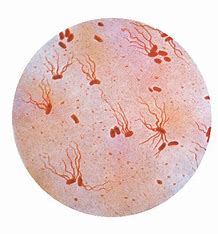Introduction
Typhoid fever is a systemic bacterial infection caused by the bacterium Salmonella enterica serovar Typhi. It is primarily transmitted through the ingestion of food or water contaminated with feces from an infected individual. Typhoid fever is a significant global health concern, particularly in areas with inadequate sanitation and poor hygiene practices. In this article, we will explore the key aspects of typhoid fever, including its causes, symptoms, diagnosis, treatment, and prevention.
Causes and Transmission
Typhoid fever is caused by the bacterium Salmonella enterica serovar Typhi. The bacteria reside in the intestinal tract and bloodstream of infected individuals and are shed in their feces. The primary modes of transmission include:
- Contaminated Food and Water: Ingesting food or water contaminated with fecal matter containing the bacteria is the most common mode of transmission. This can occur due to poor sanitation practices, inadequate water treatment, or handling of food by infected individuals who did not practice proper hygiene.
- Person-to-Person Transmission: Direct person-to-person transmission can occur when an infected individual does not practice proper hand hygiene after using the toilet. The bacteria can be transmitted through close contact, such as touching contaminated surfaces or shaking hands with an infected person.
Symptoms
The symptoms of typhoid fever typically develop within one to three weeks after exposure to the bacteria. Common signs and symptoms include:
- Sustained Fever: A sustained high fever, often as high as 103-104°F (39-40°C), is a hallmark symptom of typhoid fever. The fever may gradually increase over several days.
- Gastrointestinal Symptoms: Symptoms such as abdominal pain, diarrhea or constipation, nausea, and vomiting may occur. Diarrhea is more common in children, while constipation is more typical in adults.
- Weakness and Fatigue: Feelings of weakness, fatigue, and malaise are common during the course of the illness.
- Headache and Body Aches: Headaches, body aches, and generalized discomfort may be present.
- Rash: In some cases, a rose-colored rash known as “rose spots” may appear on the trunk.
- Enlarged Spleen and Liver: The spleen and liver may become enlarged in some individuals.
Diagnosis
Diagnosing typhoid fever requires a combination of clinical evaluation, medical history, and laboratory tests. Common diagnostic methods include:
- Blood Culture: Culturing a blood sample to identify the presence of Salmonella enterica serovar Typhi bacteria.
- Stool Culture: Culturing a stool sample to detect the bacteria in the feces, particularly during the early stages of the illness.
- Serologic Tests: Blood tests that detect antibodies against Salmonella enterica serovar Typhi can be useful for diagnosis, especially in the later stages of the illness.
Treatment
Typhoid fever requires medical treatment to effectively manage the infection. Treatment options include:
- Antibiotics: Antibiotics are the mainstay of treatment for typhoid fever. Commonly used antibiotics include fluoroquinolones, cephalosporins, and azithromycin. The choice of antibiotic depends on the sensitivity of the bacteria to specific drugs and local resistance patterns.
- Supportive Care: Adequate rest, hydration, and nutrition are essential for supporting the body’s immune system and aiding recovery. In severe cases, hospitalization may be required for close monitoring and intravenous fluid administration.
Prevention
Preventing typhoid fever primarily focuses on improving sanitation, promoting hygiene practices, and vaccination. Preventive measures include:
- Safe Food and Water: Consuming clean, properly cooked food and drinking safe, treated water can help prevent typhoid infection.
- Good Hygiene Practices: Regular handwashing with soap and clean water, particularly after using the toilet and before handling food, can reduce the risk of contamination.
- Vaccination: Vaccines against typhoid fever are available and can provide protection against the disease. These vaccines include the oral live attenuated Ty21a vaccine and the injectable Vi polysaccharide vaccine.
- Travel Precautions: Individuals traveling to areas with high typhoid fever incidence should take extra precautions, such as consuming only safe food and water and practicing good hygiene.
Conclusion
Typhoid fever is a bacterial infection caused by Salmonella enterica serovar Typhi. It is primarily transmitted through contaminated food or water and is a significant public health concern, particularly in areas with poor sanitation. Early diagnosis, appropriate treatment with antibiotics, and preventive measures such as vaccination and hygiene practices play a crucial role in preventing the spread of typhoid fever. Public health efforts to improve sanitation infrastructure and promote awareness are essential in reducing the burden of this disease.

